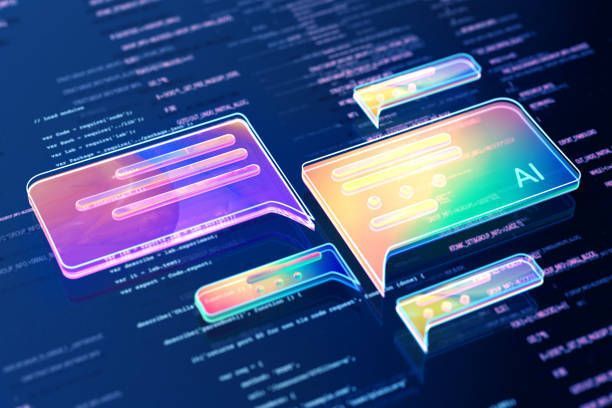Blog

In February of last year the Change Healthcare breach sent shockwaves through the healthcare industry. The company, a cloud-based software provider, suffered a devastating ransomware attack that: Exposed personal and health information of an estimated 190 million individuals Disrupted claims processing nationwide Threatened the very survival of countless small practices and healthcare providers due to delayed reimbursements Resulted in a reported $22 million ransom payment This wasn't just a big company problem - small businesses across the country, especially in healthcare, felt the devastating ripple effects. The cyberattack significantly impacted smaller practices, leading to financial strain, difficulties in submitting insurance claims, and most sadly practice closures. Beyond the Cloud Security Illusion As a small business, think about all the cloud-based vendors you use and how you would operate your business, or if you could operate your business, if one of them were attacked. The lesson here is that the cloud isn't a magical force field protecting your data. It's simply someone else's computer, located elsewhere. While reputable cloud providers implement robust security measures, remember this uncomfortable truth: The fine print in most vendor contracts holds them harmless for damages if they are hacked.

It was just another Friday for Sarah, owner of a small local medical office. After attending yesterday's chamber of commerce meeting, she opened what appeared to be a routine email from a trusted colleague containing a DocuSign contract needing her signature. Something felt off—they had just spoken in person without mentioning any paperwork—so Sarah thought she was being cyber-savvy by emailing back to confirm. When her “colleague” confirmed it was legitimate, she proceeded to open and sign the document. What Sarah didn't know: she wasn't communicating with her colleague at all, but with a criminal who had infiltrated his email account and set up auto-reply rules. By opening that document, Sarah unknowingly released malware that began spamming every contact in her address book, damaging professional relationships and tarnishing the reputation she had spent years building. We're Too Small to Be on a Criminal's Radar This dangerous misconception puts countless small businesses at risk every day. The truth? You're not too small to be hacked—you're just too small to make news when it happens. Today's cybercriminals aren't just lone actors in hoodies targeting specific businesses one at a time. They're sophisticated operations using AI-powered tools to cast wide nets across thousands of potential victims simultaneously. They don't care about your company's size or your town's population—they care about finding any unlocked door. Why Small Businesses Are Perfect Targets Small and mid-sized businesses face a perfect storm of vulnerability factors: Limited Security Resources: Unlike large corporations with dedicated security teams, small businesses typically lack specialized cybersecurity expertise. Valuable Data: Even the smallest practice holds a treasure trove of protected health information worth significant money on dark web marketplaces. Gateway to Larger Networks: Small businesses often connect to larger partner organizations, making them attractive entry points to bigger targets. Less Security Awareness: Staff at smaller organizations typically receive less security training, making them more susceptible to social engineering. False Sense of Security: The very belief that "we're too small to target" creates dangerous blind spots. The Numbers Don't Lie 61% of small businesses experienced a cyberattack in the past year, according to Verizon's 2023 Data Breach Investigations Report[¹] The average cost of a data breach for small businesses is $108,000, as reported by IBM's Cost of a Data Breach Report 2023[²] 60% of small businesses close within six months of a significant cyber incident, according to the National Cybersecurity Alliance[³] The New Cybercrime Reality Modern cybercriminals operate sophisticated business models. Rather than targeting single organizations, they employ automated attacks that simultaneously probe thousands of potential victims. When successful, these criminals don't just steal money—they harvest identities to sell on the dark web, install ransomware that locks up critical systems, or use your business as a stepping stone to attack your business partners. Being "Politely Paranoid": Your First Line of Defense As Sarah's story demonstrates, a healthy dose of skepticism could save your business from disaster. At IT Architeks, a veteran-owned Cybersecurity Provider in Frisco, TX, we advise clients to be "politely paranoid"—trust but verify: Never rely solely on email for verification. Call the sender directly using the phone number you have on file (not one provided in the suspicious communication). Scrutinize the urgency. Criminals create time pressure to force mistakes. Implement multi-factor authentication. This simple step stops 99.9% of automated attacks. Invest in employee security awareness training. Your team is both your greatest vulnerability and your strongest defense. Taking the Next Step The first step toward protecting your business is acknowledging that no organization is too small for cybercriminals to target. Next month, we'll address another dangerous myth: "My data is safe in the cloud." Until then, remember that being small doesn't make you invisible—it makes you vulnerable in different ways. Want to learn more about how our veteran-led team delivers military-grade Cyber Security Prevention in Frisco, TX? Call IT ArchiTeks today for a complimentary cyber strategy session.

Over the past few weeks, I've shared stories about ransomware attacks, preventable security disasters, and the crucial human element in cybersecurity. Today, I want to talk about something that might sound technical at first but has become one of the biggest vulnerabilities in the trucking industry: API security. What's an API and Why Should You Care? You're probably thinking, "API sounds like tech jargon – why does this matter to my trucking business?" Let me explain with a simple example. Think of an API (Application Programming Interface) like the drive-thru window at a restaurant. You pull up, place your order, and receive your food without ever going inside the kitchen. The drive-thru window is the interface between you and the restaurant's operations. In your trucking business, APIs work similarly. They're the connections that allow different software systems to talk to each other: Your fleet management system communicating with your electronic logging devices (ELDs) Your dispatch software connecting to customer portals Your maintenance tracking system sharing data with parts inventory Your telematics systems sending real-time vehicle data to your operations center According to the 2024 NMFTA Trucking Cybersecurity Trends Report, API security has become a critical concern for the industry. Almost all trucking companies now use APIs for essential operations – yet many don't realize these connection points can become major security vulnerabilities. Real-World Dangers for Trucking Companies Let me translate what API security risks mean in real-world terms for your business: 1. Zombie APIs These are old, forgotten connection points that still exist in your systems. Imagine an employee who left your company two years ago, but their access badge still works on your building's door. Zombie APIs are similar – outdated connections that hackers can exploit because nobody remembered to "change the locks." 2. Authentication Bypass This happens when an API doesn't properly verify who's accessing it. It's like having a security guard who waves everyone through without checking IDs. When authentication is weak, attackers can access sensitive systems without proper credentials. 3. Data Leakage Some APIs accidentally expose more information than necessary. Imagine if your customer portal not only showed a specific customer their own shipment details, but accidentally revealed information about other customers too. This type of leakage can expose sensitive business data or even personally identifiable information. The Trucking Industry's Unique API Challenges The trucking industry faces unique challenges when it comes to API security: Mobile-Side Integration: Your trucks are essentially mobile offices with multiple connected devices and systems. Each connection point between in-cab technology, telematics, ELDs, and your central systems creates potential vulnerabilities. Supply Chain Integration: Modern trucking operations are deeply integrated with customer systems, broker platforms, and partner logistics providers. These necessary connections expand your digital footprint and create more potential entry points. Legacy Systems: Many trucking companies operate with a mix of newer software alongside legacy systems. These hybrid environments often require additional connection points, creating more complex API security challenges. Signs Your API Security Might Be at Risk How do you know if your trucking company's API security needs attention? Watch for these warning signs:= 1. Unexplained System Behavior Are your systems occasionally acting strangely – showing incorrect data, experiencing unusual slowdowns, or displaying unexpected errors? These could be signs that someone is accessing your systems through insecure APIs. 2. Integration Chaos Has your company added multiple software systems over the years without a coordinated plan? If you're using different vendors for fleet management, dispatch, ELDs, maintenance tracking, and accounting – all with various integration points – you likely have API security gaps. 3. No API Inventory or Testing If you don't have a complete inventory of all the connection points into your systems or haven't tested their security, you almost certainly have vulnerabilities. Many companies don't even know all the APIs they have in place. Protecting Your Fleet from API Threats The good news is that you can significantly improve your API security with some straightforward steps: 1. Create an API Inventory You can't secure what you don't know exists. Work with your IT team or provider to identify all connection points in your systems – especially older ones that might have been forgotten. 2. Implement Strong Authentication Ensure every API requires proper verification before allowing access. Multi-factor authentication should be required for all sensitive systems. 3. Regular Security Testing APIs should be tested regularly to identify potential vulnerabilities before attackers find them. This includes checking for proper authentication, authorization, and data handling. 4. Monitor API Traffic Implement monitoring solutions to track who's accessing your APIs, when, and for what purpose. Unusual patterns could indicate an attack attempt. 5. Update or Retire Legacy Connections Replace outdated APIs with modern, secure alternatives. If old connection points are no longer needed, shut them down completely. A Real Industry Wake-Up Call During the NMFTA's Digital Solutions Conference last fall, security experts demonstrated how a simple antenna could be used to compromise a truck's braking system by sending malicious messages through diagnostic interfaces. This sobering demonstration highlights why securing every connection point – from your office systems to your trucks themselves – is essential for modern fleet safety. Moving Forward Securely As your trucking operations continue to become more digital and interconnected, API security will only grow in importance. The companies that address these vulnerabilities now will have a significant advantage in protecting their operations, data, and reputation. Remember – you don't have to tackle this alone. At IT ArchiTeks, we've helped many trucking companies identify and secure their API vulnerabilities before they could be exploited. Ready to ensure your digital connection points are as secure as your physical operations? Schedule a cyber strategy session and let's talk about how we can help protect all aspects of your fleet.

Last week, I shared the heartbreaking story of a 95-year-old trucking company that closed its doors after a devastating cyberattack. While studying these types of cyber-attacks, I've noticed a pattern that might surprise you – the most sophisticated security technology in the world can be rendered useless by simple human actions, and the best-trained teams can't protect you without proper technology. It takes both working together to create a truly effective defense. Beyond the Technology In my 20+ years helping businesses recover from losses, I've seen something remarkable: the human element is consistently the most critical factor in either preventing or enabling cyberattacks. According to industry research, over 80% of security incidents involve human actions – a clicked link, a shared password, or simply not recognizing the warning signs of an attack. Let's look at some scenarios that illustrate common vulnerabilities we see in the trucking industry. When Good People Make Simple Mistakes Imagine this scenario: A finance manager receives an email that appears to be from their CEO. The message seems urgent – they need to wire funds to a new vendor immediately to prevent delivery delays. The email looks legitimate, even using company formatting and the CEO's typical sign-off. Wanting to be responsive, the manager follows the instructions. Unfortunately, the email isn't from the CEO at all, but from an attacker who has researched the company and carefully crafted this cyber-attack. The company loses thousands before discovering the fraud. What's interesting is this manager isn't careless – they're actually trying to be helpful and responsive. The same qualities that make someone valuable to your organization can sometimes make them vulnerable to social engineering attacks. Small Actions, Big Consequences Here's another common scenario: A trucking company's system gets compromised when a dispatch coordinator uses their work credentials on a personal device while at home. Their child later uses that same device to download what looks like a game but is actually malware. When the employee connects to the company network the next day, the malware spreads, ultimately compromising sensitive customer information and driver data. The employee has no malicious intent – they're simply trying to check work emails outside office hours. But this small decision creates a security gap that attackers can exploit. Your Strongest Shield While these scenarios highlight how human actions can create vulnerabilities, the flip side is equally powerful – your team can become your most effective security asset with the right awareness and training. When trucking companies implement comprehensive security awareness programs that include regular training, simulated phishing tests, and create a security-minded culture, successful phishing attempts typically drop dramatically. What really makes the difference? Transforming security from an IT issue to a company-wide responsibility. Everyone from drivers to executives needs to understand their role in protecting the company. Five Ways to Turn Your Team Into a Cyber Warriors Based on my experience helping trucking companies build human-centered security programs, here are five methods that actually work: 1. Make it Relevant and Personal Generic cybersecurity training falls flat. Instead, show team members how the same security practices that protect the company also protect their personal information, families, and finances. Security awareness training becomes much more engaging when it focuses on how these skills help in both professional and personal life. 2. Create a No-Blame Reporting Culture If people fear punishment, they won't report suspicious activities or their own mistakes. Consider implementing a "see something, say something" program that actually rewards employees for reporting suspicious emails or activity – even if they had initially engaged with it. Early reporting can help stop attacks before they cause damage. 3. Use Stories, Not Statistics Share real-world examples that relate specifically to trucking. Stories about other trucking companies facing similar challenges are much more powerful than abstract security concepts or generic warnings. 4. Practice Makes Prepared Regular, unannounced simulated phishing attempts or security scenarios help keep awareness high. These shouldn't be "gotcha" moments, but learning opportunities. Monthly simulated phishing emails with increasing sophistication can help your team recognize even subtle warning signs. 5. Make Security Convenient If security measures are too complicated, people will find workarounds. Work with your security team to find solutions that protect your company without creating friction for everyday work. Password managers, single sign-on solutions, and well-designed multi-factor authentication can actually improve both security and user experience. People-Centered Security The most successful cybersecurity programs I've seen in trucking companies don't just focus on technology – they build a culture where security becomes second nature. Your drivers wouldn't think twice about checking their mirrors before changing lanes; with the right approach, your team won't think twice about verifying an unusual request or reporting something suspicious. Remember – your people aren't the problem. With the right training, tools, and culture, they're your most powerful solution. And when you combine well-trained people with the right technology, you create a defensive shield that's much harder for cybercriminals to penetrate. Ready to build a security program that leverages both your team's full potential and the right technology? Schedule a cyber strategy session and let's talk about how we can help your people become your strongest defense.

In my time serving the trucking industry, I've seen cybersecurity threats transform from minor nuisances to serious business risks. Today, I want to share a story that really affected me – the fall of a 95-year-old trucking company that had weathered economic downturns, regulatory changes, and market fluctuations only to be defeated by modern cybercrime. When History Meets Hackers It was 9:00 PM when we received the call. The panic in the caller's voice was unmistakable – they were already in crisis mode. A company with nearly a century of trucking heritage was facing a disaster unlike any they'd encountered before. The attack had encrypted over 800 computers and 50 servers spread across 75 terminals nationwide. Their entire operation was paralyzed. Dispatch systems were offline. Maintenance records were inaccessible. Drivers couldn't access their electronic logs. The company's heartbeat – the technology that coordinated their fleet – had flatlined. A Perfect Storm What made this situation particularly devastating was that the attack hit when the company was already navigating financial challenges. They had minimal cybersecurity measures in place and poor backup protocols. Their infrastructure had been built over decades, with legacy systems patched together with newer technology – creating a mixture of vulnerabilities that hackers easily exploited. With their core systems completely locked and only minimal backups available, they faced an impossible choice. Ultimately, they paid the $300,000 ransom in a desperate attempt to save their business. Our team worked around the clock to restore their systems. We managed to get the main operations back online within a few weeks, and they were able to close out their business in the most respectable way possible under the circumstances. Sadly, the combination of the cyberattack and their existing financial pressures became the final blow to a company that had survived since the early 20th century. They were forced to permanently close their doors. It Doesn't Have to End This Way What saddens me about this story is how much better protected they could have been. In our work, we see patterns repeat across companies of all sizes: The "It Won't Happen to Us" Mindset : Some trucking companies still believe they're not valuable targets. The reality? Criminals target vulnerability. Neglected Legacy Systems : Older trucking companies often run critical operations on outdated systems with known security flaws that manufacturers no longer patch. Security vs. Operations Trade-off : Many companies feel implementing stronger security means sacrificing operational efficiency. With the right approach, good security actually enhances operations by preventing downtime from attacks. Inadequate Backup Strategies : Even companies that back up data often fail to test restoration procedures or secure their backups from being encrypted in an attack. Delayed Response : The hours immediately following a breach are critical. Without a predefined incident response plan, companies lose valuable time figuring out what to do. Three Signs You Might Be Next As ransomware continues to evolve, there are warning signs that your company could be vulnerable. Warning Sign #1: Your IT Provider Focuses on Operations, Not Security Having an IT provider isn't enough. In one case, we were called in after a trucking company was attacked. We discovered their previous IT provider had set them up in a multi-tenant environment without properly separating networks. When another company in that environment was attacked, criminals simply walked through the virtual wall into our now-client's network. The distinction between operational IT and specialized cybersecurity has never been more important. Warning Sign #2: You're Not Monitoring Security Alerts Another company reached out to us during an active attack. While investigating, we found their security notifications weren't configured properly, and alerts had been going to a folder that no one was checking. By the time they noticed something was wrong and called us, criminals had been in their system for months. Warning Sign #3: You Haven't Tested Your Incident Response Plan Many companies believe they're prepared until disaster strikes. One business called us in a panic during a ransomware attack. They thought they had backups, but when we asked for them, they discovered they didn't have the encryption key. What could have been a quick recovery turned into a months-long struggle. The Road Forward The transportation industry is the backbone of our economy, moving the goods that keep America running. Protecting this vital industry isn't just about safeguarding individual companies – it's about securing our national infrastructure. As threat actors continue to evolve their tactics, the question isn't whether your company will be targeted, but whether you'll be prepared when it happens. Traditional security measures are no longer enough. Today's protection requires layered defense, continuous monitoring, and a proactive approach to emerging threats. The 95-year legacy of that trucking company deserved better. Your company's legacy deserves better too. Ready to strengthen your company's protection against today's evolving threats? Let's chat about building resilience for your business! Schedule your cyber strategy session today and let’s talk about what it looks like to secure your fleet.

Growing up in my family's chain of convenience stores, I learned firsthand how crucial trucking is to America's economy. Every morning, I watched drivers deliver the goods and fuel that kept our shelves stocked and our business running. My uncle was an owner-operator trucker too. I remember my family sharing stories of his life on the road with my aunt, delivering all kinds of freight across America. Today, as a cybersecurity professional , I'm dedicated to protecting the industry that keeps our nation moving. Let me share a recent success story that demonstrates why proactive cybersecurity is so critical. Last December, just before the holidays, one of our trucking customers was hit with a sophisticated ransomware attack out of from Russia. But unlike many similar attacks that end in disaster, this story has a different ending – one that every trucking professional should hear. The Difference Between Disaster and Victory What made the difference? Just months earlier, this company had taken a critical step: they implemented a comprehensive cybersecurity program after completing a thorough risk assessment. When the attack came through a business email compromise , our security tools immediately detected the threat. Our cyber team sprang into action, working alongside forensics experts to isolate the affected systems, prevent the attack from spreading and deploy a targeted response plan The Result? After a relatively short 5 day forensics investigation, we restored their systems in 18 hours – with zero data loss, no ransom paid and business continuity maintained The Keys to Success As someone who spent 20 years helping businesses recover from losses in the insurance industry and not helping to prevent them with proactive cybersecurity, I can tell you: preventing a disaster is always better than recovering from one. Here are the key elements that turned this potential catastrophe into a success story: 1. Proactive Risk Assessment - Before implementing any solutions, we conducted a thorough evaluation of their systems, identifying vulnerabilities before attackers could exploit them. 2. Multi-Layered Security - Just like a truck needs multiple safety systems - brakes, airbags, backup cameras - cybersecurity requires multiple layers of protection like advanced email security, endpoint detection and response, 24/7 security monitoring, regular system backups and multi-factor authentication. 3. Incident Response Plan - Having a well-documented plan meant no time was wasted when seconds counted. Every team member knew their role and exactly what steps to take. 4. Tested Backup Systems - Regular backup testing ensured we could restore systems quickly and confidently when needed. The Road Ahead According to the 2024 NMFTA Cybersecurity Trends Report, ransomware and extortion attempts are increasingly targeting transportation companies. The threat isn't going away - but neither are we. As a veteran-owned company that's served the transportation industry for over 20 years, we've traded our military uniforms for keyboards, but our mission remains the same: protecting American businesses that keep our country moving. Ready to secure your fleet? Schedule a cyber strategy session and let's talk about protecting your business before an attack happens.

Think about the security measures protecting your physical business location. You probably have locks on the doors, security cameras, an alarm system, employee access codes, and a process for managing keys when staff changes. You wouldn't dream of leaving your physical location unprotected - so why would you leave your digital assets vulnerable? In 2025, your business's digital presence needs the same comprehensive protection as your physical location. Over the past month, I've shared stories about businesses that learned this lesson the hard way - from year-long silent breaches to sophisticated AI-powered scams. Now, let me show you exactly what it takes to protect your business from these threats. As someone who grew up watching my parents secure their convenience stores and bakeries, I understand that security has to be both comprehensive and practical. That's why we've developed eight essential pillars of protection that work together to keep your business safe - without breaking the bank. Your Digital Security Team Let's walk through each pillar and why it matters: 1. SaaS Backups for Email Think of this as your digital safety deposit box. Just like you keep copies of important documents in a secure location, we automatically save copies of your critical emails and data. If something goes wrong - from accidental deletion to ransomware - your important information is safe and recoverable. 2. 10x5 Help Desk Support This is like having an IT expert on speed dial. Computer problems? Login issues? Software questions? Our team is ready to help during business hours, keeping your operations running smoothly. 3. Advanced Threat Detection (EDR/MDR and SIEM) Imagine having an elite security team monitoring every entrance to your business 24/7. Our veteran-led team brings military precision to threat detection. Our advanced tools, combined with expert management, identify and neutralize threats before they can cause damage. 4. Email Security and Spam Filtering Consider this your digital bouncer, checking IDs at the door. It stops dangerous emails from reaching your inbox while letting legitimate messages through. In an age of AI-powered scams, this protection is more crucial than ever. 5. Remote Monitoring and Patch Management Just like you maintain your physical equipment, your digital systems need regular updates and maintenance. We handle this automatically, ensuring everything runs efficiently and securely. 6. Security Password Management Think of this as your digital key management system. Instead of writing passwords on sticky notes or reusing the same weak password, we help you maintain strong, unique passwords that are both secure and accessible. 7. Multi-Factor Authentication (MFA) This is like having a double-lock on your door. Even if someone gets your password, they can't access your accounts without a second form of verification. It's a simple step that stops many attacks in their tracks. 8. Employee Training and Phishing Simulation The best security systems can be undermined by human error. We train your team to recognize threats and handle data securely, then test that knowledge with simulated phishing attempts. It's like regular fire drills for cybersecurity. BONUS: Comprehensive Security Risk Assessment When you sign up for our monthly managed services, you'll receive a thorough security assessment that identifies vulnerabilities before criminals can exploit them. Think of it as a complete security audit of your digital assets. Working Together Each of these pillars is important, but their real power comes from working together. Just like you wouldn't secure your physical location with just a lock or just a security camera, your digital security needs multiple layers of protection. The IT ArchiTeks Difference The best part? You get all of this protection for one predictable monthly fee. No surprise costs. No wondering if you're covered. Just comprehensive security that lets you focus on what matters - running your business. Remember that local business that had criminals lurking in their system for over a year? Or the one that nearly fell for an AI-crafted payment scam? With these eight pillars in place, plus our expert team monitoring everything, you don't have to worry about becoming the next cautionary tale. Ready to Protect Your Business? Schedule your complimentary cyber strategy session today. Let's talk about how these eight pillars can create a solid security foundation for your business.

Remember those obvious scam emails? The ones with comical spelling errors promising millions from a Nigerian prince? Those days are gone. Let me share a story that happened just last month that shows exactly how sophisticated today's cyber criminals have become. Picture this: You're running your business when you get an email from a trusted colleague asking you to update their payment information. The email looks perfect - right tone, correct signature, even mentions recent business dealings. You reply back questioning the change, and they confirm it's legitimate. Seems reasonable, right? That's exactly what happened to a local business owner recently. The only reason she didn't fall for it? She’d spoken to her colleague in person the day before, and he hadn't mentioned anything about changing bank details. When she picked up the phone to verify, she discovered criminals had compromised his email and were targeting all his business contacts. These aren't the same cyber scams from just a few years ago. No obvious red flags. No spelling errors. Thanks to AI, the criminals crafted messages that were almost indistinguishable from the real thing. The New Face of Cyber Crime Today's cyber criminals aren't just getting better at writing emails - they're using AI to analyze your business relationships, mimic communication patterns, and craft perfectly timed attacks. They're reading your company's social media, studying your business partners, and creating highly targeted scams that look completely legitimate. That invoice from your regular vendor? It could be fake. That urgent request from your CEO? Maybe not really them. That email thread you've been part of for weeks? Criminals might have been watching and waiting for the perfect moment to slip in their own message. Being Politely Paranoid As your go-to cybersecurity girl, I always tell my clients to be "politely paranoid." Trust, but verify. Here's what that looks like: Any request involving money or sensitive information? Pick up the phone and call the person directly - using the number you know, not one provided in the email. Feel rushed or pressured? That's a red flag. Legitimate business partners understand the need for verification, especially when it comes to financial changes. Got an unexpected request, even from someone you trust? Take a moment to think: Does this make sense? Is this how we usually handle things? Why Traditional IT Isn't Enough Here's the challenge: These sophisticated attacks often slip right past traditional spam filters and security tools. They're using legitimate email accounts (just compromised ones), they're writing in perfect English, and they're following normal business patterns. This is why professional security monitoring has become crucial. While you're running your business, we're watching for subtle signs of compromise, analyzing email patterns, and stopping attacks before they reach your inbox. Protecting Your Business Remember our local business owner who almost got scammed? She did exactly the right thing - she listened to her gut and picked up the phone. But not every attack comes with a gut feeling, and businesses can't rely on luck to protect their assets. That's why IT ArchiTeks has developed our small business cyber solution that includes advanced email protection, employee training, and 24/7 security monitoring. Because in today's world, you need more than just spam filters and antivirus software. Don't Wait For a Wake-Up Call The time to protect your business is before an attack happens. Whether you need comprehensive security management or just want to make sure you're protected against these evolving threats, we're here to help. Schedule your complimentary cyber strategy session today. Let's make sure your business is protected against today's sophisticated threats.

When you started your business, you probably didn't dream about managing IT systems or worrying about cybersecurity. You had bigger dreams - serving your community, growing your business, making your mark in the world. Yet here you are in 2025, trying to figure out if your technology is secure enough, if your employees are trained properly, and whether you can trust that link in your email. Whether you're handling IT in-house or considering outsourcing, one thing is clear: today's businesses need both solid IT support and strong cybersecurity protection . As someone who grew up watching my parents manage technology challenges in their convenience stores and bakeries, I understand the reality small business owners face. You need solutions that let you focus on running your business, not running your IT department. The Real Cost of DIY Technology Let me share a story about a local internet marketing firm that was trying to handle their own technology needs. Every time a computer crashed or an employee couldn't access their email, someone had to stop what they were doing and scramble to fix it. They were constantly putting out fires instead of focusing on their clients. And security? They thought they were too small to be a target… until that one business email compromise came through and an employee downloaded a malicious software program that started spam emailing all the contacts in their database. Today, they've outsourced all their IT and security needs to us. No more distracting their team with technology issues. No more wondering if they're protected. Just one trusted partner handling everything while they focus on what they do best - growing their business. One Partner, Complete Protection Here's what makes a difference: having one team that understands both your IT and security needs. At IT ArchiTeks, we've developed a small business solution that covers all eight critical areas of security, while also managing your day-to-day technology needs. Think about it: When was the last time you worried about whether your employees were trained to spot phishing emails? Or wondered if your software was properly updated? Or had to drop everything because a computer wouldn't start? These are the headaches we eliminate. And instead of unpredictable costs when things go wrong, you get one monthly fee you can budget for. Growing Together The beauty of our approach is that it grows with you. Starting out? We can handle everything - from keeping your systems running to protecting them from threats. Growing bigger? If you decide to bring IT in-house later, we can shift to supporting your IT team with specialized security expertise. Prevention vs. Recovery Recently, I shared a story about a company that discovered criminals had been in their system for over a year. They thought they were protected. They weren't. Four months later, they're still trying to recover. This is why having both IT and security expertise matters. It's not just about keeping your systems running - it's about keeping them secure. It's not just about recovering from problems - it's about preventing them in the first place. Your Business Deserves Both You didn't start your business to become a technology expert. You started it to serve your customers, create something meaningful, maybe even change the world a little bit. Let us handle the technology so you can focus on those dreams. Whether you need full IT and security management or just security support for your existing IT team, we're here to help. Ready to stop worrying about technology and get back to building your business? Schedule your complimentary cyber strategy session today. Let's talk about how we can give your business the protection it deserves.

Picture this: You arrive at work one October morning, coffee in hand, ready to start your day. But instead of your usual login screen, you're greeted with an ominous message: "Hello! Your files have been stolen and encrypted." This isn't a hypothetical scenario—it's a real story from 2024. But here's what makes it truly terrifying: when our forensics team began investigating, they discovered something even worse. The ransomware attack wasn't the beginning of the breach—it was the grand finale of a year-long criminal operation. The Anatomy of a Modern Cyber Attack Let's break down what really happened: November 2023 (or earlier): Initial system breach The next several months: Criminals quietly extracted confidential company information, private customer data, and financial documents At some point: The stolen data was sold on the dark web to a second criminal organization The following year: The second group of criminals maintained hidden access, gathering more intelligence October 2024: Ransomware deployed, finally revealing the attack But here's the most chilling part: because the criminals had been in the system so long, meticulously covering their tracks, forensics can't even be certain whether November 2023 was truly the beginning. The breach could have started even earlier. When "Good Enough" Isn't Good Enough This company wasn't careless. They had: An IT provider Basic security measures Data backups But when disaster struck, they discovered: Their software hadn't been properly patched Critical security gaps had gone unnoticed They didn’t have the encryption key to access their backups Four months after the attack, forensics investigations continue, and the company still isn't fully operational. They're facing a complete infrastructure rebuild—from scratch. The Reality Check "We're too small to be hacked" is a myth I hear often. But here's the truth: you're not too small to be hacked; you're just too small to make the news when it happens. Cybercriminals know that smaller businesses often lack proper security measures, making them perfect targets. A Tale of Prevention Contrast this with another recent incident. A client who had implemented our full cybersecurity solution faced a sophisticated ransomware attack from Russia. The difference? Our military-grade protection detected the threat immediately. Our veteran-led team sprang into action, and after a 5-day forensics investigation, we had them back up and running in 18 hours with zero data loss. The difference between these outcomes wasn't luck. It was having proactive cybersecurity managed by genuine security experts. The Wake-Up Call If there's one lesson to take from this story, it's this: don't wait for your own ransomware wake-up call. Modern cyber-attacks are sophisticated, patient, and devastating. Traditional IT support is crucial for your business operations, but cybersecurity requires specialized expertise. The good news? You don't have to figure this out alone. Schedule your complimentary cyber strategy session today . Let's talk about protecting your business before you have your own horror story to tell.

The choice is clear for trucking companies in 2025: merely survive cyber threats or build the resilience to thrive despite them. According to the NMFTA's 2025 Trucking Cybersecurity Trends Report, our industry faces mounting challenges from ransomware, cloud-based attacks, and social engineering schemes that can compromise credentials in under a minute. While some operations struggle to recover from attacks, others bounce back within hours. The difference lies in three critical pillars of cyber resilience that can transform your vulnerability into strength. Three Pillars of Cyber Resilience Comprehensive Security Architecture - Modern trucking operations need multiple layers of defense. Basic IT support isn't enough - you need advanced identity protection, multi-layered cloud security, and continuous threat monitoring. Regular security assessments identify weak points before attackers can exploit them, while battle-tested backup systems ensure rapid recovery. Incident Response Planning - A plan collecting dust is no plan at all. Your incident response strategy must be living, tested, and regularly updated - like military battle plans. When systems are compromised, every team member should know their role, from frontline employees to top executives. Regular drills ensure your response remains sharp and effective as threats evolve. Business Continuity Strategy - Could your operation survive if critical systems failed tomorrow? Success requires documented manual procedures, tested backup communication methods, and offline copies of essential data. These protocols must be ready at a moment's notice. Lessons from the Battlefield 2024 taught us clear lessons about cyber resilience. Companies that thrived shared common traits: rigorous security assessments, updated response plans, continuous training, and regular system testing. They understood that resilience isn't a destination - it's an ongoing commitment to excellence. The Price of Unpreparedness When systems fail, the cascade is devastating. Operations freeze. Compliance violations mount. Customer trust, built over years, erodes within hours. The impact extends far beyond immediate financial losses, threatening your company's very survival. The IT ArchiTeks Advantage Building resilience demands expertise in both trucking operations and cybersecurity. We bring both, identifying vulnerabilities before attackers can exploit them. Our battle-tested tools and deep industry understanding ensure protection without disrupting operations. Looking Ahead In 2025's evolving threat landscape, standing still means falling behind. Building resilience requires continuous assessment, improvement, and adaptation. Don't wait for a breach to test your defenses. Contact IT ArchiTeks today to transform your operation from surviving to thriving.



